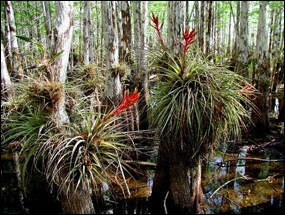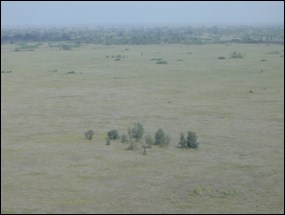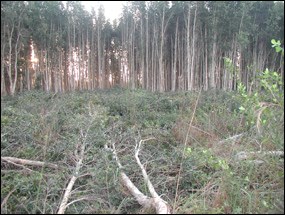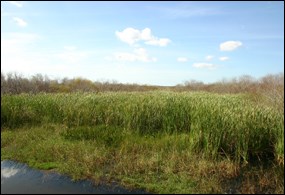
NPS photo What is an Exotic Species? The National Park Service defines native species as all species that have occurred, now occur, or may occur as a result of natural processes on lands designated as units of the national park system. Native plants evolve within their own ecological niche in concert with other native plants. Biodiversity exists when species are constrained in their growth by natural factors so that they can't overrun neighboring species. Natural growth restraints include competition with other native species, diseases, feeding by insects and other animals, climate, etc. 
NPS photo An exotic plant species lives outside its native distributional range and arrived there by human activity, either deliberate or accidental. Synonyms for exotic are alien, non-indigenous, non-native, and naturalized. Not all exotic plants (such as tomatoes!) are problematic. An invasive plant has the ability to thrive and spread aggressively outside its natural range. A naturally aggressive plant may be especially invasive when it is introduced into a new habitat. An invasive species that colonizes a new area often has an ecological advantage because the insects, diseases, and foraging animals that naturally keep its growth in check in its native range are not present in its new habitat. An exotic plant that sustains itself outside cultivation is considered naturalized; it is still exotic and has not "become" native. 
NPS photo Not all invasive plants are created equal; some are worse than others. Many invasive plants are admired by home gardeners who may not be aware of their weedy nature. Others are recognized as weeds but are difficult for property owners to control. Some do not even become invasive until they are neglected for a long time. Some aggressively colonize only small areas. Others may spread and eventually dominate large areas in just a few years. 
NPS photo Some native plants can become invasive when a habitat is disturbed, for example, by construction, when natural water-level fluctuations have been altered by the operation of drainage and pumping systems, or when excessive amounts of plant nutrients enter the water through agricultural runoff containing fertilizers. In the Everglades, native cattails (Typha species) quickly dominate wetland areas that have been disturbed or nutrient enriched, replacing the native sawgrass (Cladium jamaicense). So, Why Manage Exotic Vegetation? The mild, humid climate of south Florida makes Everglades National Park especially susceptible to invasive exotic plant infestations that threaten park natural and cultural resources. Exotic plants need to be managed in the park because they:
|
Last updated: July 17, 2015
